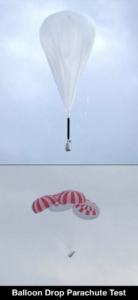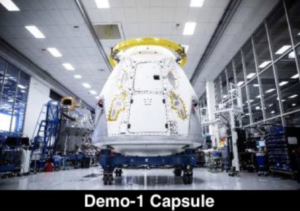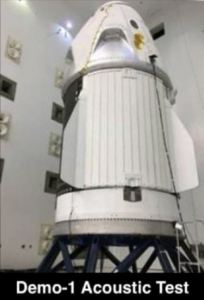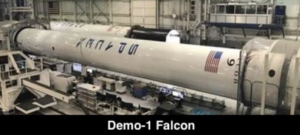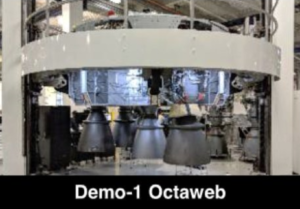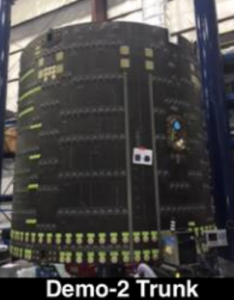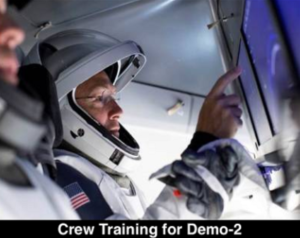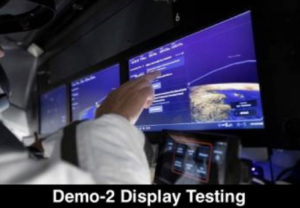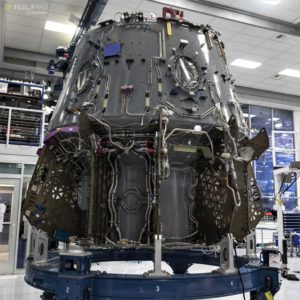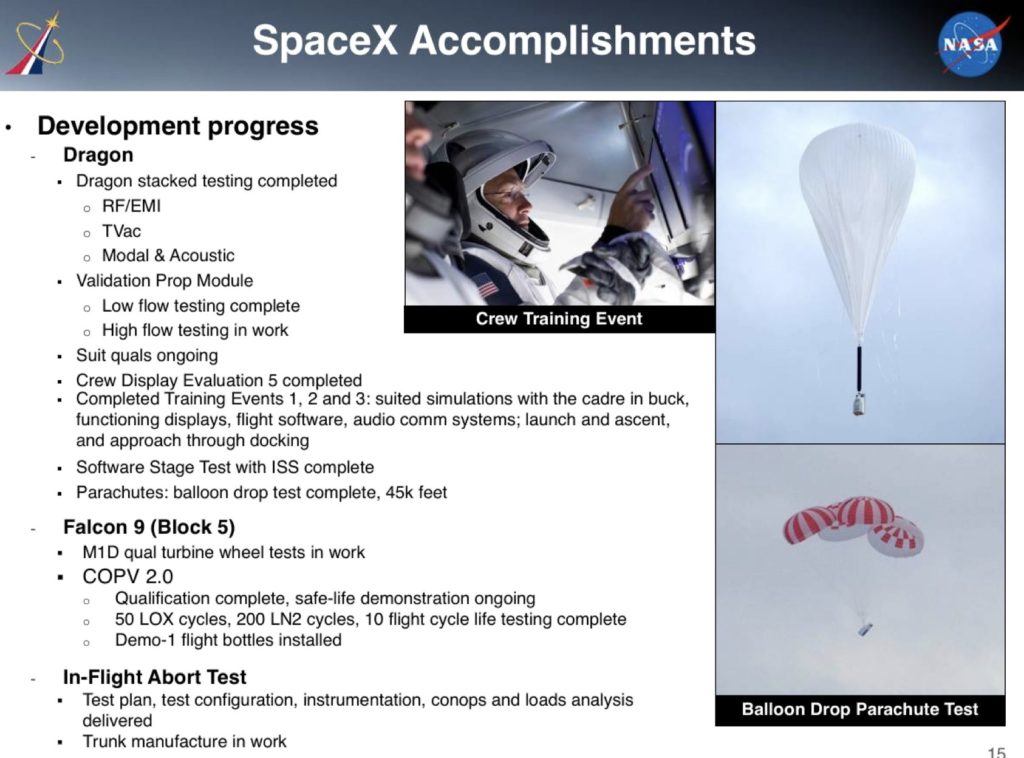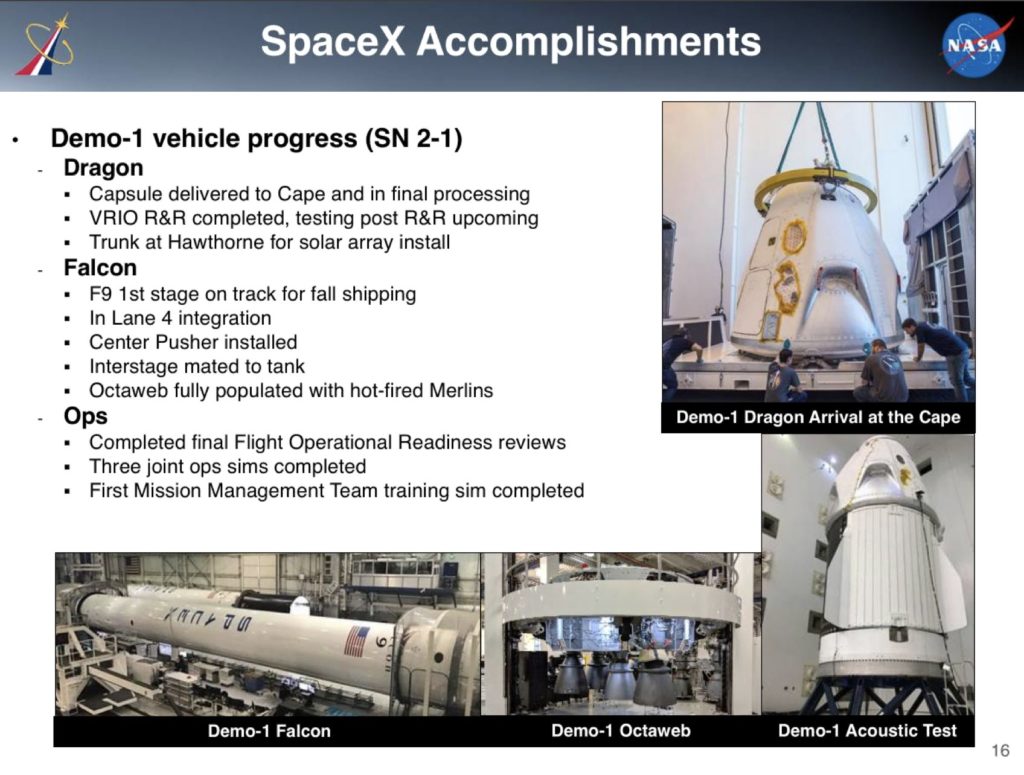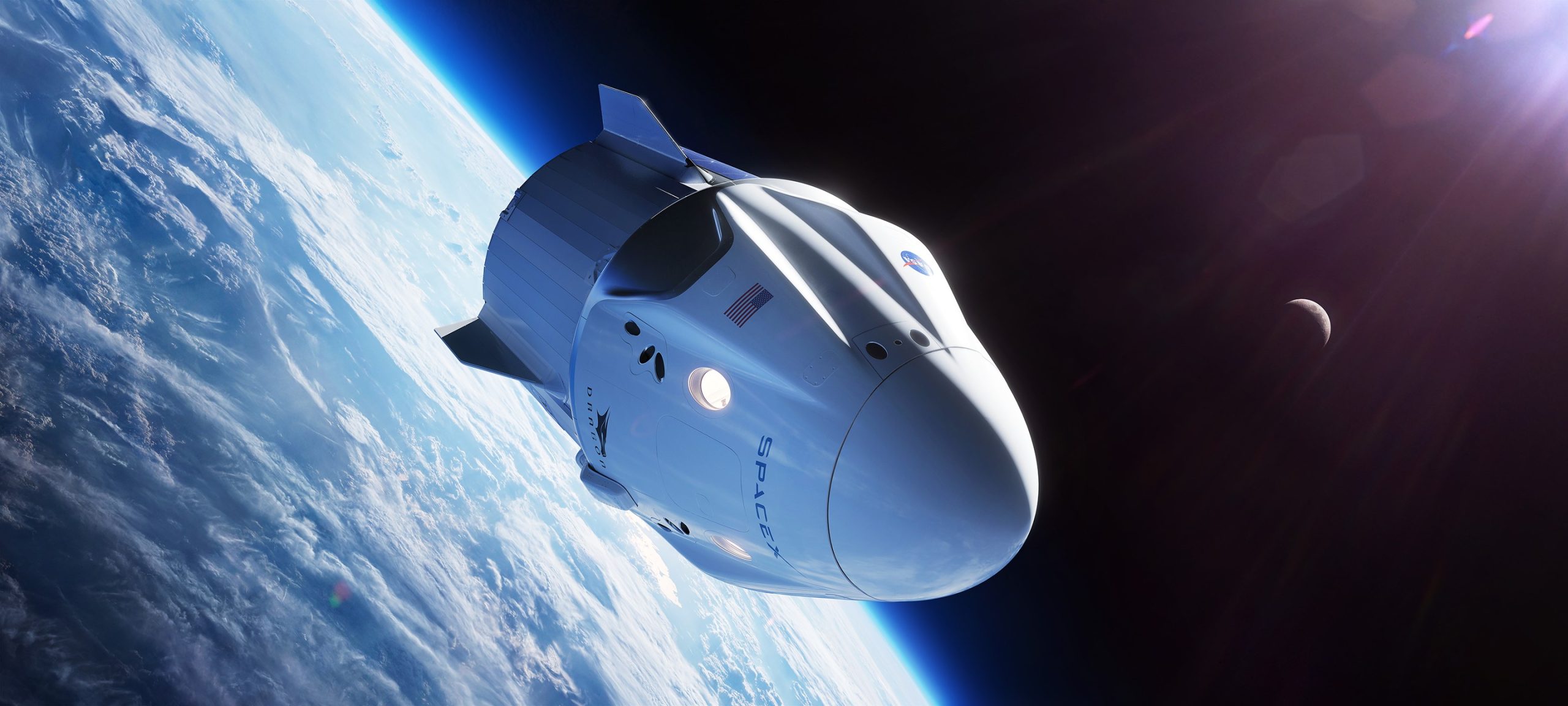
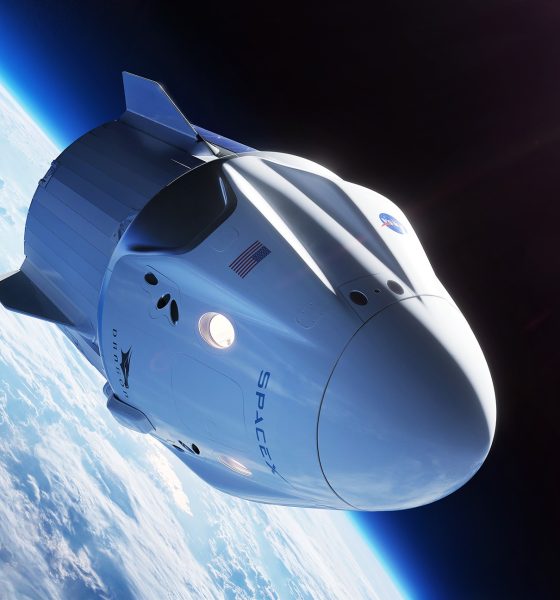
SpaceX
SpaceX’s Crew Dragon and Falcon 9 Block 5 rocket are almost ready for astronauts
In a Commercial Crew update presented by Program Manager Kathy Lueders to the NASA Advisory Council (NAC), the agency has confirmed that SpaceX is deep into the final stages of hardware preparation and testing ahead of their first uncrewed and crewed demonstrations launches of Crew Dragon.
Barring a miracle for Commercial Crew Program partner Boeing’s Starliner spacecraft program or serious faults leading up to SpaceX’s own debuts, SpaceX is all but guaranteed to become the first private company in history to design, build, and launch a spacecraft into Earth orbit with real astronauts onboard.
PICTURE OF B1051!!! It will ship to the Cape from McGregor soon.
Solar panel array on the trunk for the DM-1 capsule will take place in Hawthorne. pic.twitter.com/K82GANn5zr
— Michael Baylor (@MichaelBaylor_) August 27, 2018
SpaceX’s DM-1 Crew Dragon (serial number C201; “C” for capsule, “2” for Dragon 2, and “01” for capsule #1) capsule is already in Florida at one of the company’s spacecraft processing facilities, while that vehicle’s trunk segment – a module mounted below the capsule responsible for providing power (solar arrays), thermal regulation (radiator panels), and external cargo lift capacity – is scheduled to ship from Hawthorne, CA to Florida by the end of September. Demonstration Mission-1 (DM-1) is currently targeting a launch debut no earlier than November 2018.
DM-1’s Falcon 9 launch vehicle, booster B1051 and an expendable second stage, are also making significant progress towards the Crew Dragon’s uncrewed debut launch. NASA’s report noted that B1051 was on track for shipment (presumably to the Cape) sometime in the fall (technically anytime after August 31st) and that the upper stage would likely find its way to Florida soon after, sometime in September. Due to the fact that Merlin Vacuum engine qualification has not yet been completed, that milestone is likely the only thing standing between S2 shipment to FL, as SpaceX typically builds and tests both Falcon 9 segments near-simultaneously.
- One of the aforementioned balloon-drop parachute tests. (SpaceX)
- The DM-1 Crew Dragon capsule soon after completion. (SpaceX)
- DM-1 seen conducting acoustic testing in Ohio. (SpaceX)
- Falcon 9 B1051, DM-1’s rocket of choice, seen during construction in SpaceX’s Hawthorne factory. (SpaceX)
- B1051’s octaweb, the structure that Merlin engines attach to and thrust against. (SpaceX)
- The DM-2 Crew Dragon’s trunk module seen during production. (SpaceX)
- Crew Dragon astronauts test the capsule’s display controls. (SpaceX)
- SpaceX Crew Dragon capsule C203 – then assigned DM-2 – is seen here in August 2018. (Pauline Acalin)
Meanwhile, SpaceX has successfully completed a duo of unique and critical tests of Crew Dragon’s parachute systems, carrying a Crew Dragon mass simulator (i.e. boilerplate) up to 45,000 feet (13,700 m) under a huge balloon before dropping the mockup, a test series designed to prove out the ability of the parachute system to successfully deploy and function in the exact flight regimes the real hardware will experience while safely returning astronauts to Earth. As NASA Commercial Crew Program Manager Kathy Lueders herself noted, that type of testing is extremely difficult to pull off, but SpaceX has thus far completed two.
On the launch pad side of things, SpaceX will be exclusively conducting Crew Dragon missions from Pad 39A. The company completed installation of a strikingly modern-looking crew access arm (CAA) just days ago, marking a crucial milestone for the historic launch complex to be truly ready to support human spaceflight once more, a heritage represented physically by the tower the arm is installed on (Shuttle-era) and the pad’s foundation and thrust diverter (constructed to support Saturn V’s Apollo moon missions).
That’s right provided the two Crew Dragon test flights go well. Hardware will def be ready. https://t.co/KcAFArYn1x
— Elon Musk (@elonmusk) August 6, 2018
Further down the road, SpaceX has already entered into the late stages of hardware integration and preparation for the second Crew Dragon demonstration mission (DM-2), which will almost without a doubt see SpaceX become the first private entity in history to build, launch, and operate a crewed spacecraft in Earth orbit.
According to NASA’s SpaceX-derived schedule, that particularly historic spacecraft is expected to be ready for launch as early as January, a full three months prior to its current April 2018 launch date. CEO Elon Musk did note recently on Twitter that the hardware for both crewed and uncrewed demonstration missions would “def[initely] be ready” for the launch dates of November 2018 and April 2019.
Catch all the technical SpaceX-related slides below.
- August 27, 2018. (NASA)
- August 27, 2018. (NASA)
- August 27, 2018. (NASA)
- August 27, 2018. (NASA)
- August 27, 2018. (NASA)
For prompt updates, on-the-ground perspectives, and unique glimpses of SpaceX’s rocket recovery fleet check out our brand new LaunchPad and LandingZone newsletters!

Elon Musk
SpaceX issues statement on Starship V3 Booster 18 anomaly
The incident unfolded during gas-system pressure testing at the company’s Massey facility in Starbase, Texas.

SpaceX has issued an initial statement about Starship Booster 18’s anomaly early Friday. The incident unfolded during gas-system pressure testing at the company’s Massey facility in Starbase, Texas.
SpaceX’s initial comment
As per SpaceX in a post on its official account on social media platform X, Booster 18 was undergoing gas system pressure tests when the anomaly happened. Despite the nature of the incident, the company emphasized that no propellant was loaded, no engines were installed, and personnel were kept at a safe distance from the booster, resulting in zero injuries.
“Booster 18 suffered an anomaly during gas system pressure testing that we were conducting in advance of structural proof testing. No propellant was on the vehicle, and engines were not yet installed. The teams need time to investigate before we are confident of the cause. No one was injured as we maintain a safe distance for personnel during this type of testing. The site remains clear and we are working plans to safely reenter the site,” SpaceX wrote in its post on X.
Incident and aftermath
Livestream footage from LabPadre showed Booster 18’s lower half crumpling around the liquid oxygen tank area at approximately 4:04 a.m. CT. Subsequent images posted by on-site observers revealed extensive deformation across the booster’s lower structure. Needless to say, spaceflight observers have noted that Booster 18 would likely be a complete loss due to its anomaly.
Booster 18 had rolled out only a day earlier and was one of the first vehicles in the Starship V3 program. The V3 series incorporates structural reinforcements and reliability upgrades intended to prepare Starship for rapid-reuse testing and eventual tower-catch operations. Elon Musk has been optimistic about Starship V3, previously noting on X that the spacecraft might be able to complete initial missions to Mars.
Elon Musk
SpaceX Starship Version 3 booster crumples in early testing
Photos of the incident’s aftermath suggest that Booster 18 will likely be retired.
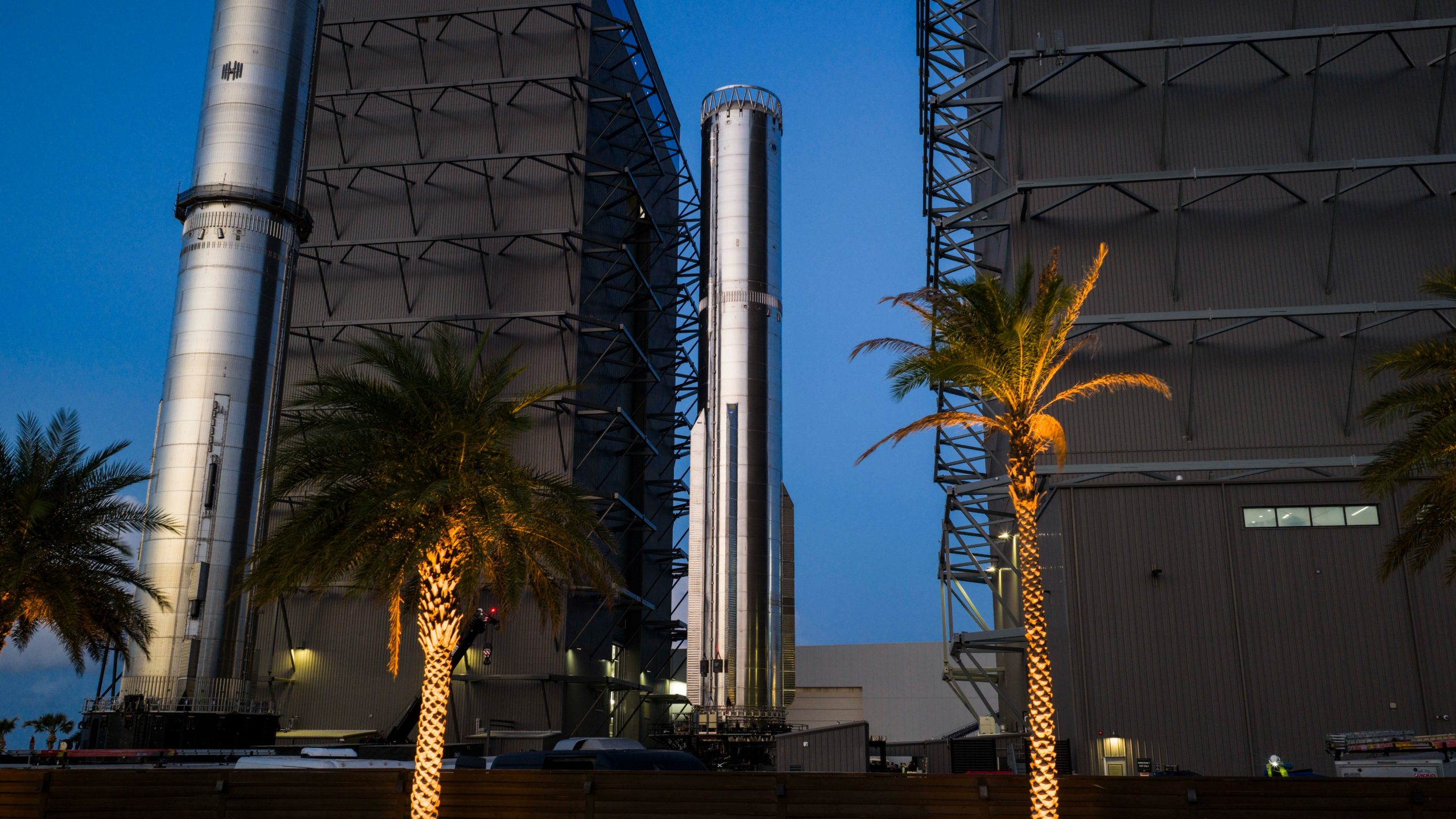
SpaceX’s new Starship first-stage booster, Booster 18, suffered major damage early Friday during its first round of testing in Starbase, Texas, just one day after rolling out of the factory.
Based on videos of the incident, the lower section of the rocket booster appeared to crumple during a pressurization test. Photos of the incident’s aftermath suggest that Booster 18 will likely be retired.
Booster test failure
SpaceX began structural and propellant-system verification tests on Booster 18 Thursday night at the Massey’s Test Site, only a few miles from Starbase’s production facilities, as noted in an Ars Technica report. At 4:04 a.m. CT on Friday, a livestream from LabPadre Space captured the booster’s lower half experiencing a sudden destructive event around its liquid oxygen tank section. Post-incident images, shared on X by @StarshipGazer, showed notable deformation in the booster’s lower structure.
Neither SpaceX nor Elon Musk had commented as of Friday morning, but the vehicle’s condition suggests it is likely a complete loss. This is quite unfortunate, as Booster 18 is already part of the Starship V3 program, which includes design fixes and upgrades intended to improve reliability. While SpaceX maintains a rather rapid Starship production line in Starbase, Booster 18 was generally expected to validate the improvements implemented in the V3 program.
Tight deadlines
SpaceX needs Starship boosters and upper stages to begin demonstrating rapid reuse, tower catches, and early operational Starlink missions over the next two years. More critically, NASA’s Artemis program depends on an on-orbit refueling test in the second half of 2026, a requirement for the vehicle’s expected crewed lunar landing around 2028.
While SpaceX is known for diagnosing failures quickly and returning to testing at unmatched speed, losing the newest-generation booster at the very start of its campaign highlights the immense challenge involved in scaling Starship into a reliable, high-cadence launch system. SpaceX, however, is known for getting things done quickly, so it would not be a surprise if the company manages to figure out what happened to Booster 18 in the near future.
Elon Musk
SpaceX’s next project will produce Starships at a level that sounds impossible
1,000 rockets per year is an insane number, especially considering Starship’s sheer size.
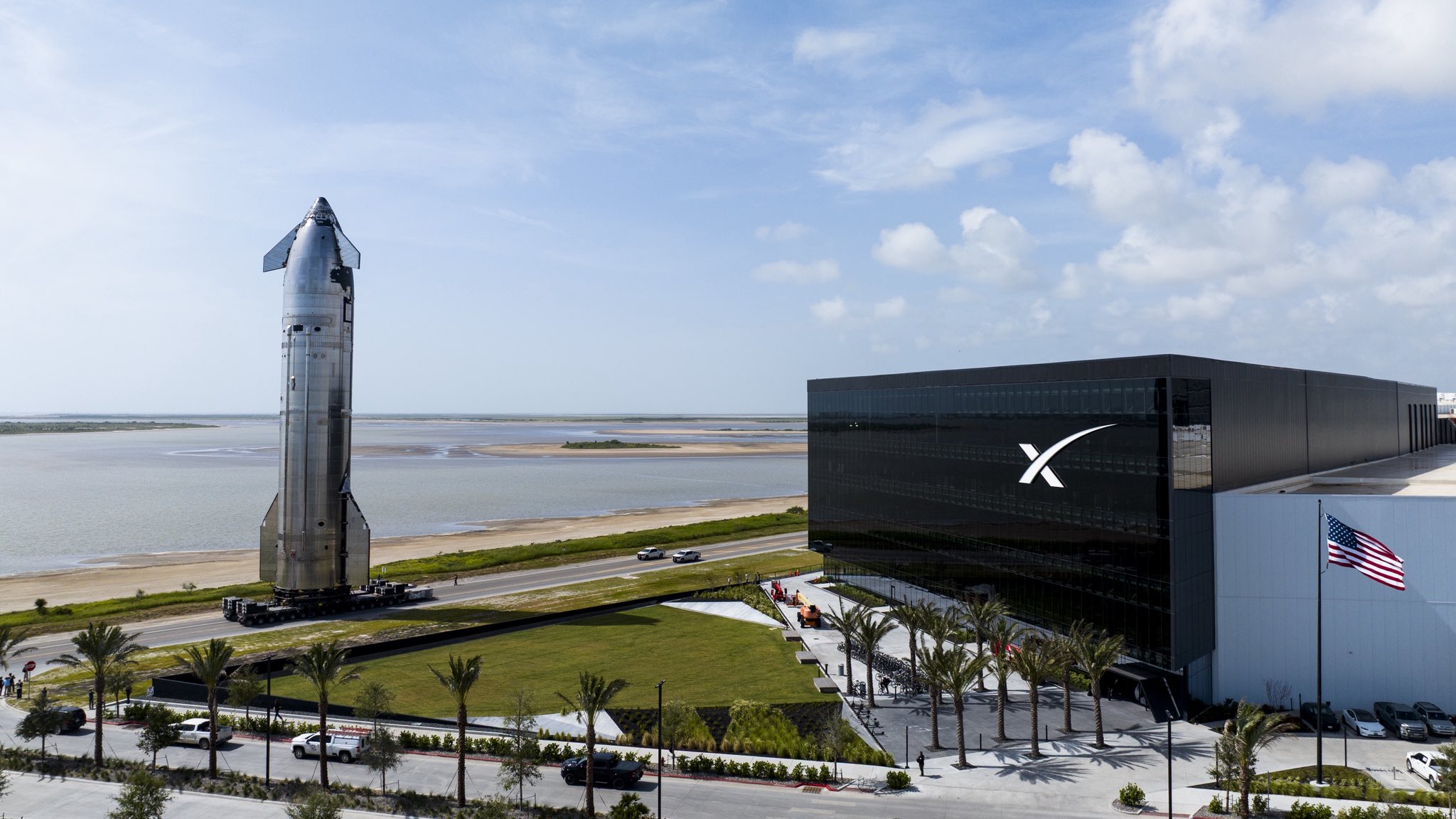
Elon Musk has revealed bold plans for SpaceX’s newest Starbase facility in Texas, predicting it will become a birthplace for “so many spaceships.” The upcoming “Gigabay,” a massive $250 million production hub in Starbase, Texas, is designed to manufacture up to 1,000 Starship rockets per year.
That’s an insane number of rockets for a single facility, especially considering Starship’s sheer size.
One of the world’s largest industrial structures
SpaceX’s Gigabay is expected to stand roughly 380 feet tall and enclose 46.5 million cubic feet of interior space, making it one of the largest industrial structures to date. The facility will feature 24 dedicated work cells for assembling and refurbishing Starship and Super Heavy vehicles, complete with heavy-duty cranes capable of lifting up to 400 U.S. tons, as noted in a Times of India report.
Construction crews have already placed four tower cranes on-site, with completion targeted for December 2026. Once operational, the Gigabay is expected to boost SpaceX’s launch cadence dramatically, as it would be able to build up to 1,000 reusable Starships per year, as noted in a report from the Dallas Express. Musk stated that the Gigabay will be “one of the biggest structures in the world” and hinted that it represents a major leap in Starbase’s evolution from test site to full-scale production hub.
A key step toward Mars and beyond
Starship is SpaceX’s heavy-lift rocket system, and it remains a key part of Elon Musk’s vision of a multiplanetary future. The vehicle can carry 100–150 tonnes to low Earth orbit and up to 250 tonnes in expendable mode. With several successful flights to date, including a perfect 11th test flight, the Starship program continues to refine its reusable launch system ahead of crewed lunar missions under NASA’s Artemis initiative.
Starship is unlike any other spacecraft that has been produced in the past. As per Elon Musk, Starship is a “planet-colonizer” class rocket, as the magnitude of such a task “makes other space transport task trivial.” Considering Starship’s capabilities, it could indeed become the spacecraft that makes a Moon or Mars base feasible.
